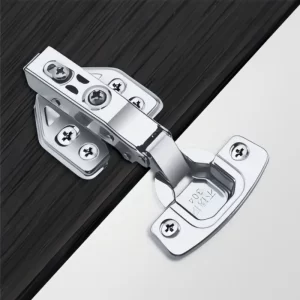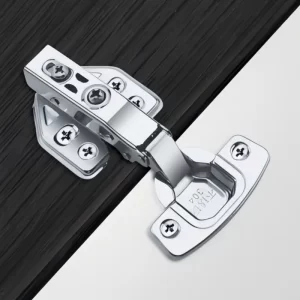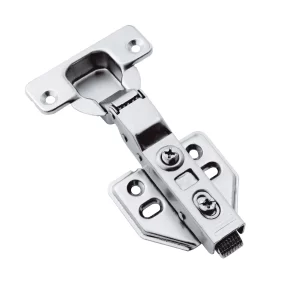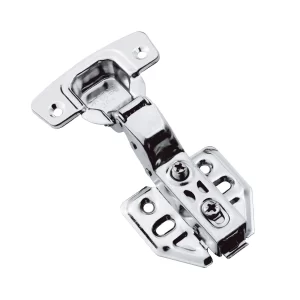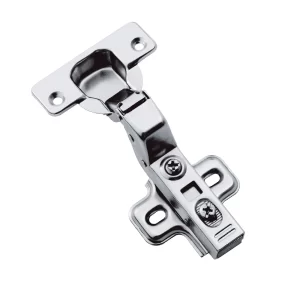When it comes to cabinet hardware—hinges, handles, and pulls—function is only half the fight. Surface finish is equally important, determining not only how well the hardware will last but also how it will look down the line. Some of the most popular finishing methods include Physical Vapor Deposition (PVD) coating, Nickel plating, and Powder coating. Each has its own strengths and weaknesses when it comes to durability, aesthetics, and cost.
In this blog, Mingrun, a professional hinge manufacturer, will take a closer look at these three finishing technologies, explore how they are applied, and evaluate which one is truly the most durable for cabinet applications.
Physical Vapor Deposition (PVD) Coating
PVD has quickly become the gold standard for modern cabinet hardware, especially in premium markets.
PVD is a process of evaporating a metal (such as titanium, zirconium, or chromium) in a vacuum chamber and depositing it on the hinge’s surface. It forms a thin, but extremely hard film that adheres at a molecular level.
Advantages:
- Durability superior: PVD coatings are extremely resistant to scratches, corrosion, and tarnishing. The coating does not flake or peel like paint or plating.
- Eco-friendly process: PVD, as opposed to electroplating, is a process that does not use toxic chemicals and is thus safer and more environmentally friendly.
- Color versatility: PVD is capable of producing hinge finishes in gold, black, bronze, or even custom colors, with an even sheen.
- Suitable for humid environments: Kitchens and bathrooms are humid with exposure to cleaning agents. PVD is resistant to such environments with high tolerance.
Disadvantages:
- Higher cost: Equipment and technology involved are more expensive, so PVD is a costlier finish than traditional ones.
- Complicated production: Not every manufacturer can ensure the consistent quality of PVD coating.
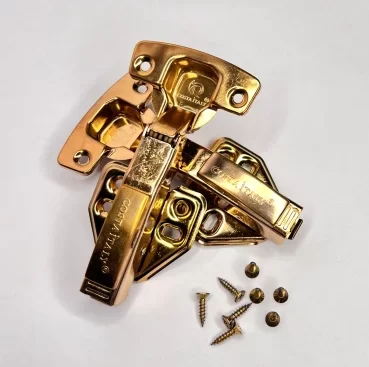
PVD Coated Hange
🏆 Best use: High-end cabinet hardware where high-end aesthetics and long-term durability are the most important.
Nickel Plating
Nickel plating is a very traditional and one of the most popular finishing methods for cabinet hardware. It remains highly popular due to the balance between cost and performance. Hinges are dipped into a chemical solution containing nickel salts, and an electric current deposits a thin layer of nickel onto the surface. A copper layer can be deposited underneath for better adhesion sometimes.
Pros:
- Bright, polished appearance: Nickel plating produces a traditional, shiny silver appearance that complements both traditional and modern cabinet styles.
- Moderate corrosion resistance: Nickel protects the base metal from rusting under normal indoor conditions.
- Economical option: Cheaper than PVD, it suits mid-range cabinet hardware.
Cons:
- Prone to wear: Nickel plating can scratch, dull, or discolor with time.
- Peeling risk: The plated layer will peel or flake when not properly applied, when it is exposed to moisture or abrasive cleaning products.
- Environmental concern: Electroplating involves toxic chemicals that require stringent waste treatment.
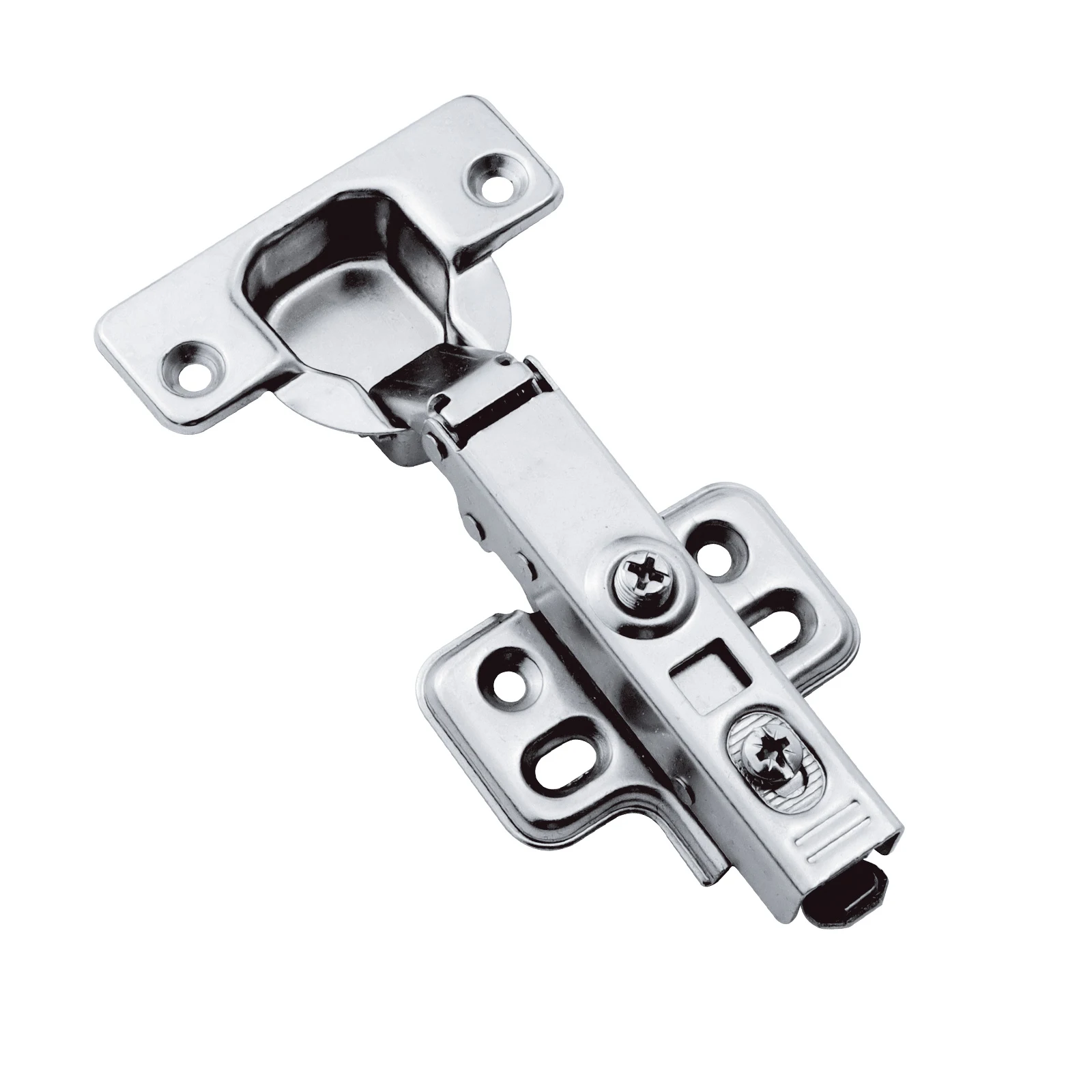
Nickel Plated Door Hinge
⭐Best use: Stock kitchen or bath cabinets in moderate-use applications where budget is a concern.
Powder Coating
Powder coating goes in an entirely different direction than PVD and plating. It’s a paint-like coating that is sprayed on as a dry powder and baked onto the surface. A dry powder (most often a thermoplastic or thermoset polymer) is electrostatically sprayed onto the metal surface. The coated hardware is then put into a specialized curing oven that is used to ensure that the powder melts, flattens, and cross-links at the specified temperature, ultimately forming a strong protective layer.
Strength:
- Thick, protective coating: Powder coating offers a strong resistance to scratches, rust, and UV damage.
- Color flexibility: Available in limitless colors and textures—from matte black to metallic finishes—so it is highly customizable.
- Cost-effective: Less costly than PVD, typically, but still relatively durable.
- Eco-friendly: Powder coating emits fewer volatile organic compounds (VOCs) than liquid paint.
Shortcomings:
- Less luxurious look: Powder coating may not have the upscale metallic glow of PVD or nickel plating.
- Chipping: Upon impact, powder coating chips and exposes the base metal.
- Thicker coating: The relatively thick coating might hide small details on ornamental cabinet hardware.
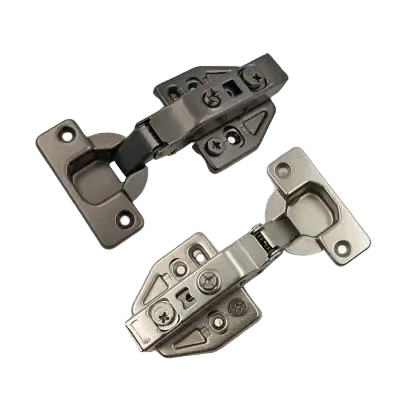
Powder Coated Hinge
🎯Best use: Cabinets that require bright colors, modern style, or budget-friendly durability.
Comparision Summary
| Finish Type | Scratch Resistance | Corrosion Resistance | Appearance Over Time | Cost Level | Ideal Application |
|---|---|---|---|---|---|
| PVD Coating | Excellent | Excellent | Long-lasting, retains shine | $$$ | Premium/high-use cabinets |
| Nickel Plating | Moderate | Good (indoor only) | May tarnish/peel | $$ | Mid-range cabinets |
| Powder Coating | Good | Very Good | Color may fade or chip | $–$$ | Budget to mid-range, colorful designs |
Conclusion
PVD coating by far beats all others as the strongest, most durable, and longest-lasting finish for cabinet hardware. It’s worth every penny spent on high-end kitchens and bathrooms.
Nickel plating is a tried-and-true, cost-effective alternative, but it may have to be replaced or re-polished in the long term.
Powder coating offers the advantages of versatility and affordability, which make it the perfect selection for homeowners who prioritize design variety over durability.
Hinge finishes aren’t just about looks—they’re the first line of defense against wear, corrosion, and premature replacement. PVD stands out as the premium choice for longevity, while nickel and powder coating cater to different needs (budget and color, respectively).
About Mingrun, A Reliable Hinge Supplier Manufacturer

Mingrun is a professional hinge manufacturer, devoted to durable and high-quality hinges for cabinets, doors, and furniture applications. Our products are built with precision and reliability to ensure smooth performance and long-lasting use.
We offer custom hinge solutions to meet diverse market needs, from design and functionality to personalized branding. Get a sample now!

